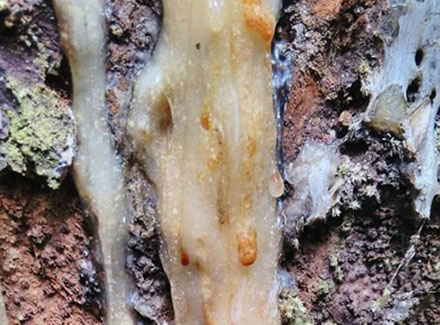
The New Zealand Government is to hold a review into the eight-year-old program to save the kauri, with the Minister of Forestry calling previous efforts “grossly substandard”. Source: The New Zealand Herald
Kauri trees in Auckland, the Coromandel and Northland are dying from a soil-borne fungal disease which has been spreading rapidly since it was identified a decade ago.
Phytophthera agathidicida, or kauri dieback disease, has no known cure. Its spores are believed to be spread by humans and animals moving soil on their feet, as the disease is rife near popular tramping tracks.
In 2009 the cross-agency Kauri Dieback Programme was launched to help find a cure and stop the disease’s spread. But attempts to prevent dieback infecting new trees have mostly been futile.
Dieback has now infected one in five kauri in Auckland’s Waitakere Ranges – double the rate of five years ago – and has been found just 60m away from Northland’s ancient Tane Mahuta, the largest kauri in New Zealand.
Experts have warned that the giant native could be extinct in the Waitakeres within a generation.
The new Minister of Forestry, NZ First MP Shane Jones, said it was clear the kauri dieback program had been “grossly substandard to date”.
But he blamed factionalism and “bureaucratic pathogens” for the program’s failure to halt Phytopthera’s spread.
Scion, the Crown Research Institute for forestry, already has the world-leading scientists and technical people it needs to fight dieback, Mr Jones said.
“They need, not only to be financially encouraged, but they need a clear line of sight as to who is running the strategy, and to have as few bureaucratic fetters as possible.”
MPI director-general Martyn Dunne had advised that the best course of action was to create a national pest management strategy and treat the disease as a major biosecurity threat, Mr Jones said. The scope and cost of the review are still to be determined.
Forestry officials including Mr Dunne would be briefing Mr Jones and Mr Jones in turn would brief Prime Minister Jacinda Ardern.
A kauri dieback program would likely be an integral feature of any forest policy in the future, Mr Jones said.
“The Prime Minister has already called for a significant amount of native planting as we develop our billion tree strategy,” he said.
“I think if it’s possible for us to move swiftly and cull diseased cows and stop the transport of potentially diseased cows off private farms, we need a similar level of vigour in safeguarding areas where our kauri are still strong.”
He was reluctant to blame the previous government.
“We can hold [National’s former Minister for Primary Industries] Nathan Guy responsible for many things but being the vector for a kauri-killing pathogen is not one of them.
“The reality is though that under his watch, kauri trees have died in the hundreds, if not thousands,” he said.
“The primary produce legacy of the National government is fetid water, dead kauri trees and continual squirting of milk from Fonterra’s udder – well those days are over.
“We are not going to run primary produce just to suit Fonterra. Primary produce is about forestry and biodiversity and saving something as iconic as kauri.”
The NZ First MP said he would be doing “everything in his power” to fix the problem. “If we don’t it looks like it will be the tangi of the kauri.”





